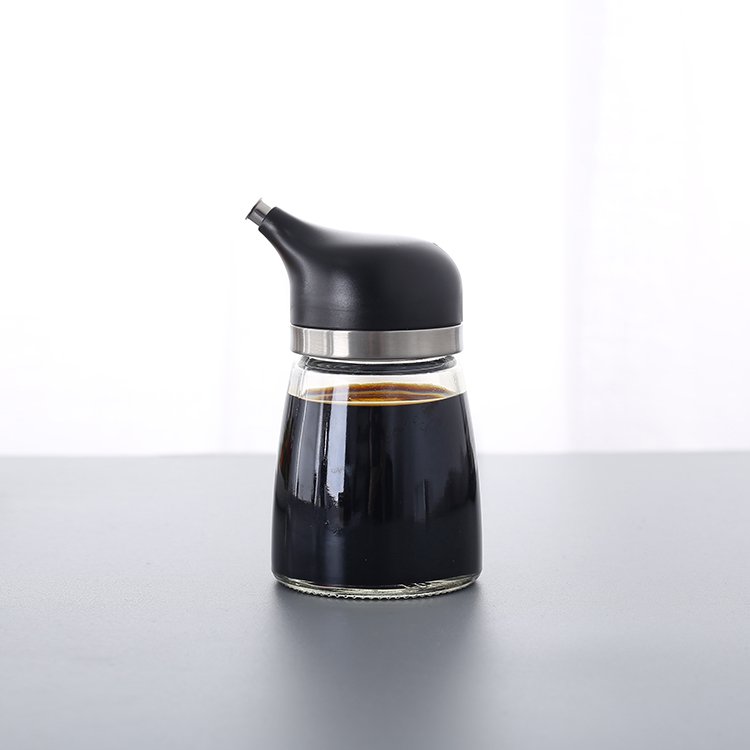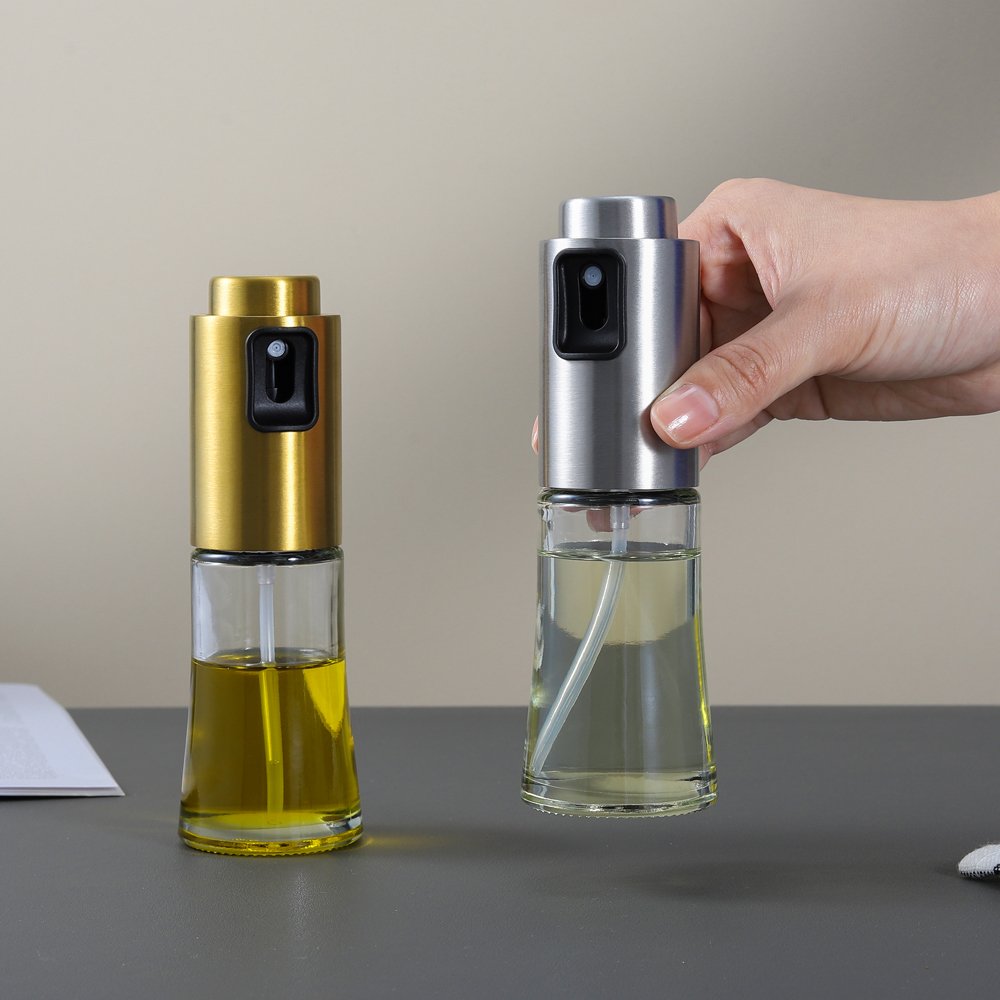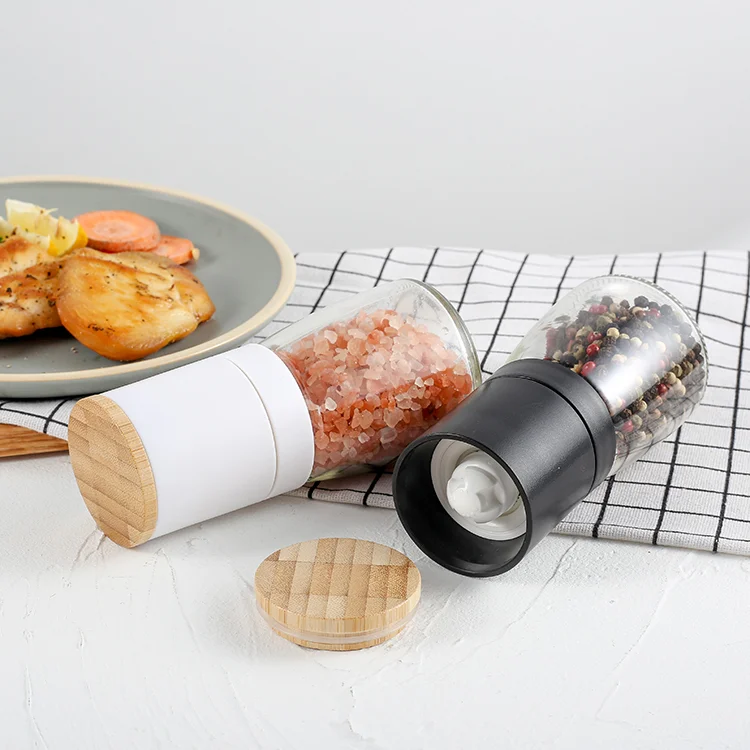
Design pepper mill innovations have transformed dining in restaurants, homes, and even luxury venues. Throughout history, these innovations have made it possible for diners to enjoy freshly ground pepper and freshly ground peppercorns at every table. The table below shows how design pepper mill milestones—from Peugeot’s first model in 1874 to six grind settings in 2004—reshaped dining culture, making freshly ground pepper an essential part of restaurants, fine dining, and everyday meals.
| Year | Innovation / Milestone | Description |
|---|---|---|
| 1874 | Peugeot’s first pepper mill | Still manufactured today, transforming dining |
| 1996 | Sales milestone | One million mills sold, elevating restaurants worldwide |
| 2004 | Patented u’Select system | Six grind fineness options for dining flexibility |
Restaurants now rely on design pepper mill solutions to offer freshly ground peppercorns and enhance the dining experience. Freshly ground pepper, ground at the table, signals quality in restaurants and sets the standard for modern dining and restaurant design.
The History of the Pepper Mill: From Origins to Peugeot Pepper Mill

Early Pepper Mills and Their Limitations
The history of the pepper mill began with simple tools. Early designs took inspiration from the mortar and pestle, requiring users to crush peppercorns by hand. This process demanded significant effort and often resulted in unevenly ground pepper. Many early pepper mills used fragile materials, such as delicate crystal bodies, which limited their durability. Restaurants struggled to provide consistent freshly ground pepper at the table, and diners often found the experience lacking.
Early table-top pepper mill models could not withstand frequent use in busy restaurants. The grinding mechanisms wore down quickly, and the mills broke easily. This made it difficult for chefs to deliver the bold flavor of freshly ground peppercorns during dining service.
A look at historical records reveals the challenges faced by these early designs:
| Year | Event/Detail | Notes on Limitations or Production Volume |
|---|---|---|
| 1874 | First Peugeot pepper mill introduced | Marks the beginning of Peugeot pepper mill production; no volume data given |
| 1889 | Coffee grinder production volume | 450,000 coffee grinders produced; no explicit pepper mill volume data |
| 1930 | First electric coffee grinders | Models were cumbersome with external motors and belt drives; ceased production in 1932, indicating early design limitations |
| 1931 | Bakelite pepper mill model | Identified by Lion on base; no production volume data, but indicates material innovation |
| 1932 | Lacquered pepper mill models | Decorative improvements; no volume or performance data |
| 1936 | “Ric” coffee grinder invented | Modern luxury design with chromium parts; no pepper mill volume data |
| 1952 | Practical electric coffee grinders | Lighter and less cumbersome than 1930s models; signaled end of manual coffee grinders; no pepper mill volume data |
Despite these limitations, the demand for freshly ground peppercorns in restaurants continued to grow. Diners wanted a better dining experience, and chefs searched for a solution that could deliver both flavor and reliability.
The Peugeot Pepper Mill Revolution
The Peugeot pepper mill changed the dining landscape forever. In 1842, Peugeot of France invented a new pepper grinder that used a metal construction with nearly indestructible grooves inside the casing. This innovation made grinding peppercorns more efficient and durable. The Peugeot family, known for their expertise in steel, applied their special metal treatment technique to create a grinding system with an almost infinite lifespan. The lion symbol on each famous Peugeot pepper mill represented strength and reliability, much like a lion’s jaw.
Restaurants quickly adopted the Peugeot pepper mill. Chefs could now offer diners freshly ground pepper at every meal, elevating the dining experience. The consistent grind and robust construction allowed restaurants to serve a variety of types of peppercorns, enhancing the flavor profile of each dish. The Peugeot pepper mill became a symbol of quality and innovation in dining culture.
Historical accounts highlight the revolutionary impact of this design. The Peugeot family’s transition from flour milling to steel production around 1810 set the stage for this breakthrough. By 1840, they had developed a proprietary grinding system for both coffee and pepper mills. This system delivered unmatched durability and performance, making the Peugeot pepper mill a staple in restaurants worldwide. The design history of the pepper mill shifted, and the Peugeot name became synonymous with excellence in dining.
Adjustable Grinders and Enhanced Functionality
As dining expectations evolved, so did the pepper mill. Adjustable grinders emerged, allowing chefs and diners to control the coarseness of ground peppercorns. This innovation gave restaurants the flexibility to cater to different tastes and dishes. Diners could now enjoy everything from a fine dusting of pepper to a bold, coarse grind, all at the table.
Modern pepper grinders feature mechanisms that handle a wide range of types of peppercorns. Adjustable settings ensure that every meal receives the perfect grind, whether in a casual bistro or a fine dining establishment. The ability to customize the grind transformed the dining experience, making freshly ground pepper an essential part of every restaurant’s service.
Adjustable grinders empower chefs and diners alike. They bring out the best flavors in peppercorns and elevate every dining occasion.
The history of the pepper mill demonstrates how innovation can shape both flavor and culture. From early limitations to the revolutionary Peugeot pepper mill and the rise of adjustable grinders, each advancement has enhanced the way restaurants serve and diners enjoy freshly ground pepper. The famous Peugeot pepper mill stands as a testament to the power of design and the enduring appeal of freshly ground peppercorns at the table.
Modern Design Pepper Mill Innovations and Cultural Impact

Electric Pepper Mills and Technological Advances
Electric pepper mills have transformed dining in both homes and restaurants. These devices offer effortless grinding, allowing users to season dishes with freshly ground pepper at the touch of a button. The market for electric pepper mills reached a valuation of USD 0.7 billion in 2023 and is projected to grow to USD 1 billion by 2033. This growth reflects a strong demand for convenience and efficiency in dining settings.
| Evidence Category | Details |
|---|---|
| Market Valuation | USD 0.7 billion in 2023, projected to reach USD 1 billion by 2033 with a CAGR of 4.5% |
| User Preferences | Adjustable grinding settings, ergonomic designs, rechargeable batteries, smart features (Bluetooth, app integration) |
| Technological Benefits | Innovations in battery tech, grinding precision, smart home integration enhancing efficiency and customization |
| Product Segmentation | Battery-operated (portable) and rechargeable (eco-friendly, long-lasting) models |
| Regional Adoption | Strong usage in North America, Europe, Asia-Pacific in both residential and commercial kitchens |
| Smart Features | Bluetooth connectivity, smartphone app control, voice commands for customization and alerts |
| Manufacturer Innovations | AI-driven grinding adjustments, sensor operation, real-time data analytics for optimized use |
| Consumer Drivers | Convenience, time-saving, consistent grinding, enhanced culinary experience |
Modern electric pepper mills feature rechargeable batteries, adjustable grind settings, and even smart connectivity. Some models allow users to control grind size and monitor usage through smartphone apps. Restaurants benefit from these innovations by delivering consistent, freshly ground pepper to every table, enhancing the overall dining experience. Improved motor efficiency and ergonomic designs also make these pepper mills ideal for busy kitchens, where speed and reliability matter most.
New Materials and Aesthetic Trends in Pepper Mills
Contemporary pepper mills showcase a blend of advanced materials and striking aesthetics. Manufacturers now use stainless steel for rust resistance and durability, ceramic grinding cores to preserve the flavor of peppercorns, and clear acrylic bodies for easy content visibility. These innovations ensure that each pepper mill delivers long-lasting performance and maintains the integrity of freshly ground pepper.
- Sustainable and eco-friendly materials such as renewable bamboo, recycled stainless steel, and biodegradable components are increasingly used, reflecting consumer demand for environmentally responsible products.
- Premium designs often feature wood and brushed stainless steel, offering both sophistication and longevity.
- Aesthetic trends include traditional wooden finishes, modern sleek lines, rustic styles, colorful artistic expressions, and minimalist forms.
- Technological advances introduce biocomposites, 3D-printed parts, and antibacterial coatings for improved hygiene and sustainability.
- Modular designs allow for easier cleaning and customization, while ergonomic features enhance grip and usability.
- Sustainability remains a top priority, with recyclable and biodegradable materials and low-impact production methods gaining traction.
- Future trends point toward smart features like digital counters, programmable grinding, and app connectivity, as well as greater personalization options.
The pepper mill market continues to grow as consumers seek gourmet experiences and freshly ground spices. Adjustable grind settings, corrosion-resistant materials, and visually appealing designs drive this demand. Restaurants and home cooks alike value these features, which elevate both the flavor and presentation of dishes. The integration of sustainable materials and innovative manufacturing processes also aligns with modern values, making each design pepper mill an icon of design and a statement of environmental responsibility.
Designer Collaborations and Iconic Statement Pieces
Designer collaborations have played a pivotal role in shaping the cultural significance of pepper mills. Partnerships between renowned designers and manufacturers have produced iconic statement pieces that blend artistry with function. Jens Quistgaard’s collaboration with Dansk, for example, resulted in sculptural pepper mills crafted from teak wood and fitted with high-quality Peugeot grinders. These pieces have become highly collectible, admired by architects, designers, and culinary enthusiasts.
- Collectors such as Brent Buck and the couple Alex & Maren have documented and preserved Quistgaard’s legacy, creating digital exhibits to share the history and artistry of these pepper mills.
- The relaunch of signature Quistgaard designs by Dansk demonstrates ongoing demand and influence in the market.
- High-grade materials and expert craftsmanship ensure that these pepper mills stand out for their longevity and artistic value.
- The collaboration fostered a community of enthusiasts who contribute to the appreciation and historical understanding of these design pieces.
These designer pepper mills serve as more than just kitchen tools. They become conversation starters and focal points in dining spaces, reflecting the owner’s taste and appreciation for attention to detail. Restaurants often display such statement pieces to reinforce their commitment to quality and style, making the act of grinding peppercorns a memorable part of the dining ritual.
Pepper Mills in Dining Rituals and Restaurant Culture
Pepper mills have evolved into essential elements of dining rituals and restaurant culture. In the early 20th century, American diners viewed grinding pepper as a foreign custom, often associated with European restaurants. Over time, competitive restaurateurs reintroduced pepper mills to signal sophistication and elevate the dining experience. By the 1950s and 1960s, large pepper mills operated by wait staff became symbols of hospitality and attention to detail.
- Early American diners associated pepper mills with German or Italian restaurants and European customs.
- Restaurateurs reintroduced pepper mills to appear more sophisticated, influenced by global travel and gourmet trends.
- Small pepper mills placed on tables were often stolen, prompting the use of oversized mills handled by servers.
- Oversized pepper mills became a performative gesture, enhancing perceived service quality and encouraging tipping.
- Today, pepper mills have standardized in size and are common in upscale dining, symbolizing care and enhancing the ritual of seasoning food.
Restaurants now use design pepper mill solutions to create memorable moments for guests. The act of grinding peppercorns tableside signals freshness and quality, reinforcing the restaurant’s commitment to excellence. Diners expect freshly ground pepper as part of the meal, and the presence of a well-crafted pepper mill has become a hallmark of refined restaurant design. This tradition continues to shape the way people experience flavor, hospitality, and the artistry of dining.
Design pepper mill innovations continue to transform dining. Restaurants drive demand for premium mills, blending tradition with modern creativity. Dining experiences improve as restaurants embrace sustainability, digitalization, and new materials.
- Market growth reflects dining trends and restaurants’ focus on quality.
- Sustainability, durability, and style shape dining and restaurants’ future.
FAQ
What makes a modern pepper mill better than traditional models?
Modern pepper mills use advanced materials and adjustable settings. They deliver consistent grinds, last longer, and look stylish. Chefs and home cooks enjoy better flavor and control.
How do electric pepper mills improve the dining experience?
Electric pepper mills offer effortless grinding. Users press a button for fresh pepper. Restaurants and home kitchens benefit from speed, convenience, and consistent seasoning every time.
Why should restaurants invest in designer pepper mills?
Designer pepper mills impress guests and show attention to detail. They enhance table presentation, reinforce brand image, and create memorable dining moments that encourage repeat visits.






